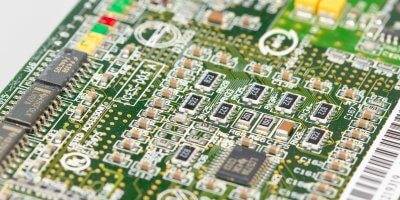
Walmart associate stocking a fridge with InHome Delivery. Source: Walmart
Connected consumer devices represent big business opportunities
CONSUMERS are increasingly warming up to electronic devices that are connected to the home or office WiFi network and can be controlled remotely.
From coffee machines to air conditioners, today’s consumer devices can be controlled via apps and configured to be turned on/off automatically.
This might create some security risks — we’ve all heard the case of criminals hacking their way into home surveillance systems to check if the “coast is clear” — however, the devices also make life (very) comfortable.
Naturally, the proliferation of connected devices creates new opportunities for organizations across the world.
“Connected experiences are diversifying into new touchpoints. Use cases such as communication, entertainment, home automation, managing personal well-being and lifestyle now spread across devices such as mobile, tablet, smart speaker, and robot,” said IDC Senior Research Manager Lawrence Cheok.
“Digital journeys will be fragmentized as new devices proliferate, and organizations will be expected to string these touchpoints into coherent experiences.”
Although this is a marked trend today, experts suggest that pioneers (such as HP) might have spotted it almost a decade ago:
The global manufacturer of printers was perhaps the first company in the world that figured out the business opportunities tied to connected consumer devices.
Back in 2011, the company began experimenting with a program that alerted the company whenever one of its printers — connected to the internet in the consumer’s home or office — was low on ink. HP then shipped ink to the customer before it could potentially run out and interrupt their workflow.
In 2013, the program was formally launched as the Instant Ink program, and till date, is a runaway success. What was a novelty back then, of course, is now a common feature — with competitors such as Brother Refresh among others.
Over time, devices have become wireless, smarter, and more convenient, and created even more opportunities for businesses.
Most recently, for example, Walmart announced that the company will be using connected “doors” to help make grocery deliveries right into the consumer’s kitchen.
Dubbed InHome Delivery, the service is designed to help customers save time and offer yet another convenient choice for grocery shopping by delivering groceries even when customers can’t be home.
Here’s how it the new Walmart service works:
- Customers place a grocery order and then select InHome Delivery and a delivery day at checkout
- Customers can then go about their days while a Walmart associate takes care of their grocery shopping for them – from food aisle to fridge.
- At the time of delivery, associates use smart entry technology and a proprietary, wearable camera to access the customer’s home – allowing customers to control access into their homes and giving them the ability to watch the deliveries remotely.
Walmart said that the associates will also go through an extensive training program to prepare them for the job — to treat the customer’s home with respect and to select the freshest grocery items and organize the most efficient refrigerator.
“Now we can serve customers not just in the last mile, but in the last 15 feet. And that’s truly inspiring,” said the company’s press release.
Again, Walmart’s efforts to delight customers are exciting but not a new innovation in any way.
More than 18 months ago, Amazon announced a similar service it called Amazon Key where customers with Amazon’s Cloud Cam and compatible lock could remotely allow delivery associates into their homes to ensure packages were safe even in their absence.
All this just goes to show that forward-thinking businesses are aggressively exploring the opportunities that new connected consumer devices create — those that aren’t, risk losing out, as customer interest and appetite for such products continues to grow.
READ MORE
- Aviation giant Airbus turns to chatbots to engage top talent
- In the digital economy, MoneyGram focuses on getting the basics right
- How FedEx uses technology to delight customers in the digital era
- FedEx Express/Ground collaboration will improve last-mile delivery
- Growth is fabulous: Why Foodpanda’s app and team are growing rapidly






